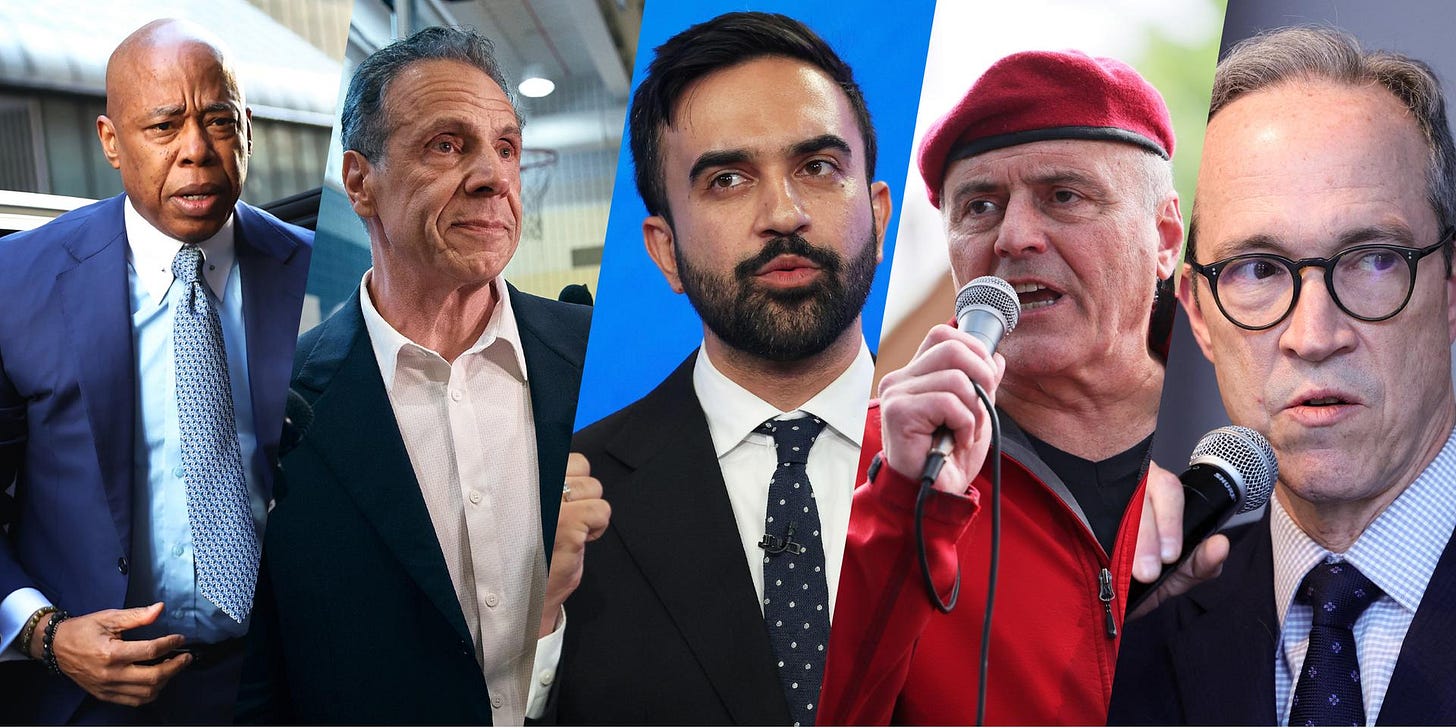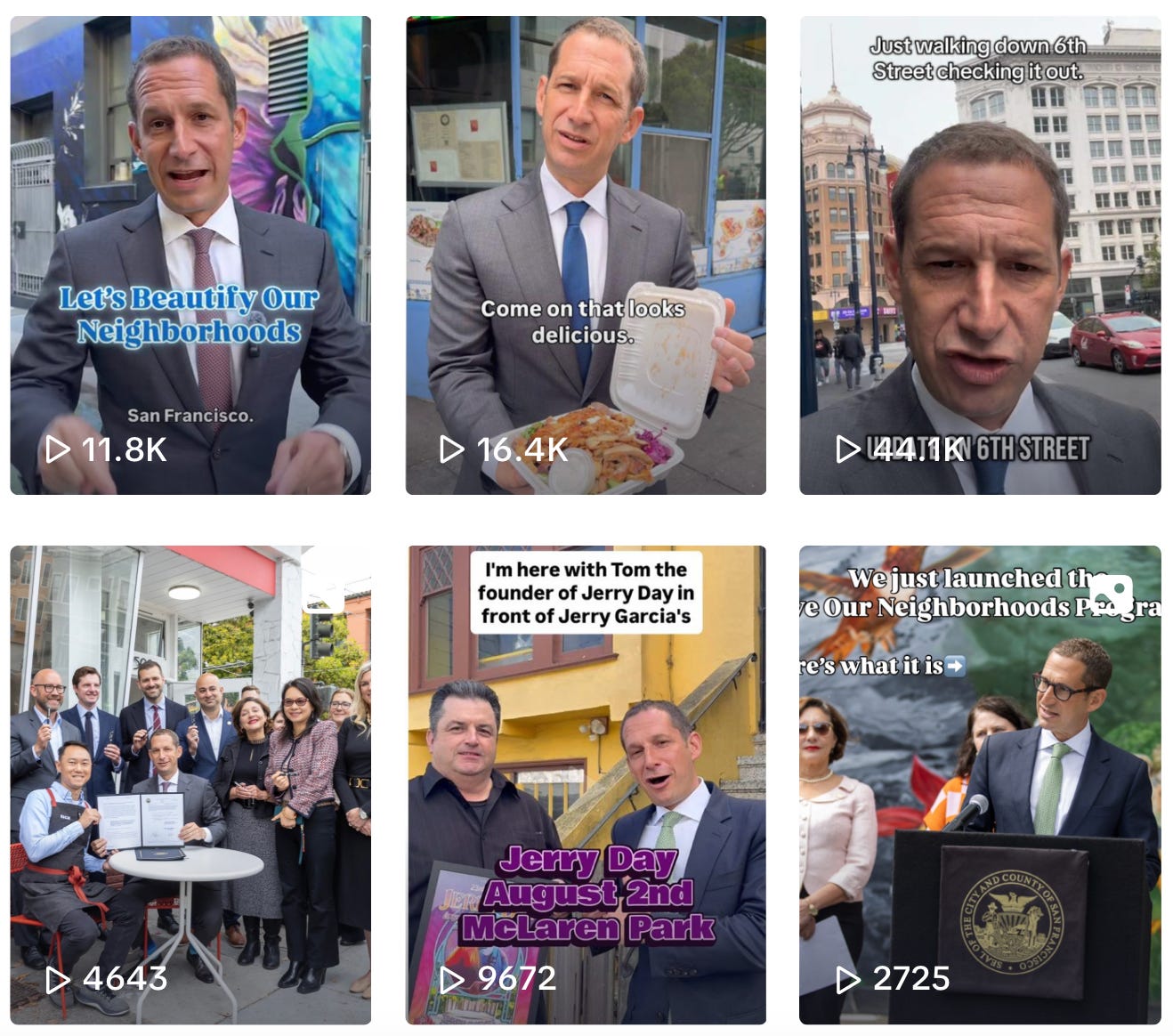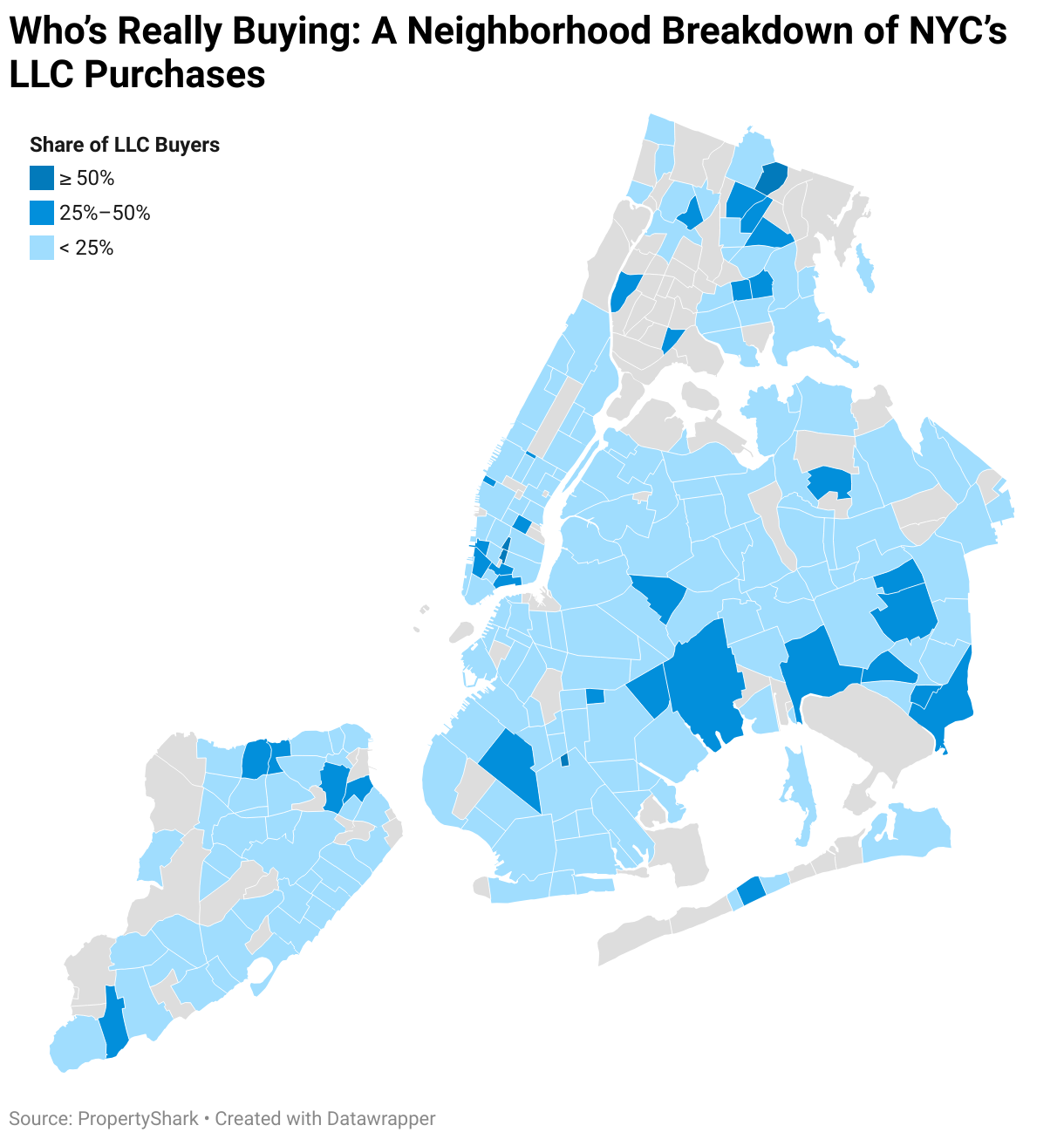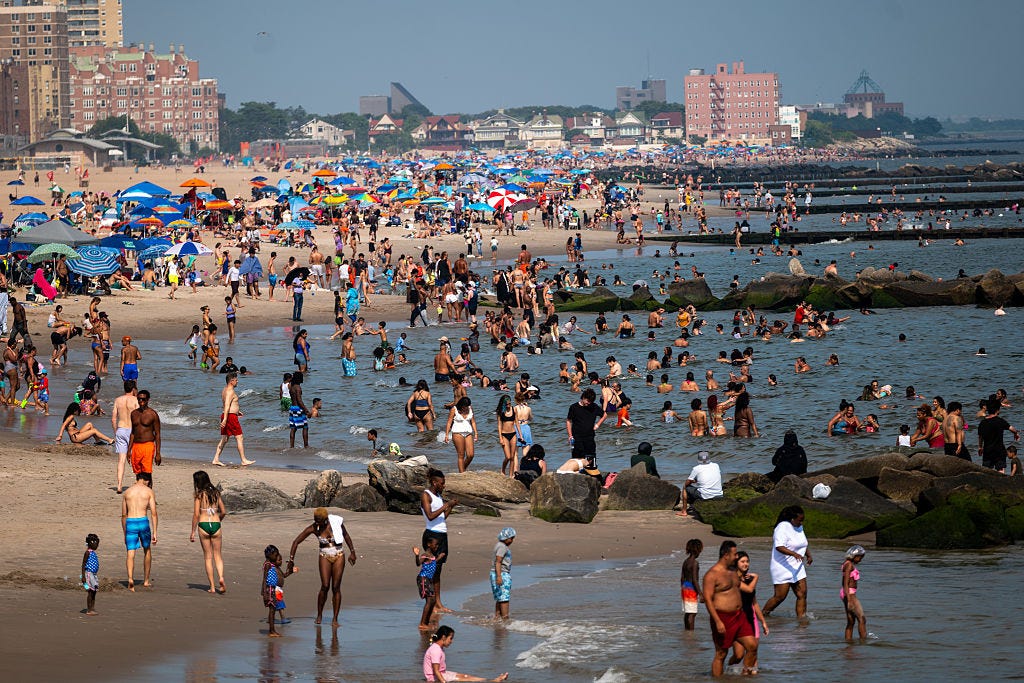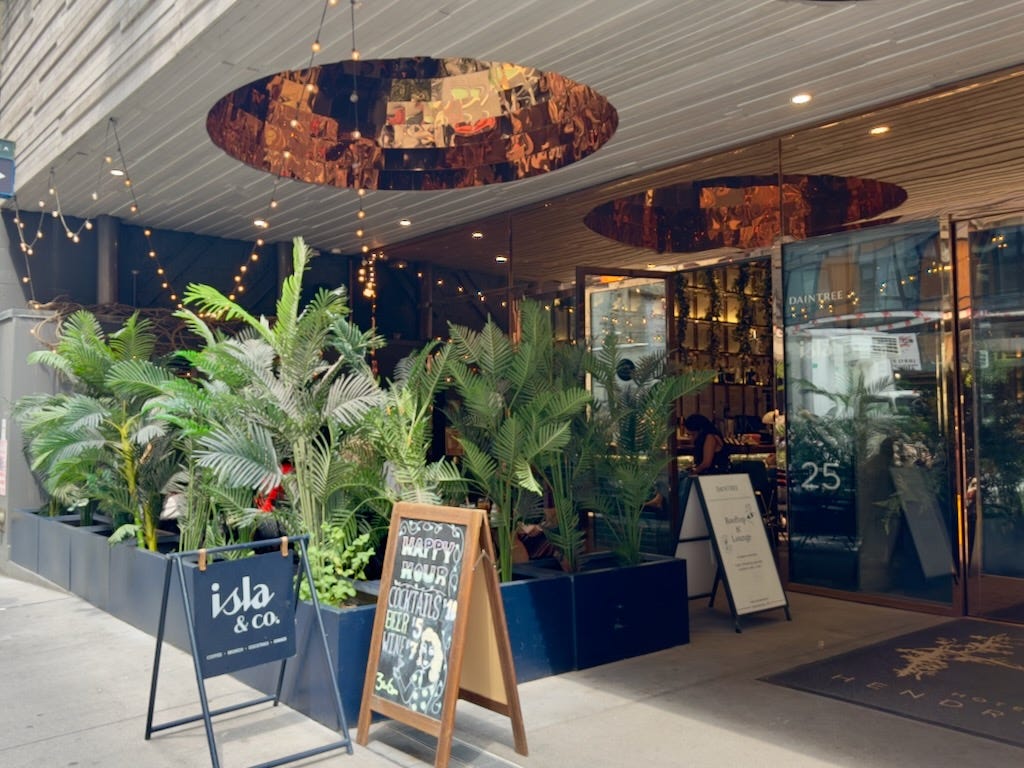Social Media Mayor
The next mayor will have to be an influencer, too.
Mayoral Media
Public life in New York has always centered on who gets to set the terms of debate—and how that power is wielded. In past decades, the city’s narrative was shaped by the mayor behind the podium and the headline in every tabloid. But today, the conversation is everywhere and nowhere: city government, campaign, and opposition all flow through private social feeds, leaving no corner untouched and no reality uncontested.
Eric Adams, the incumbent, embodies the official advantages of City Hall in the digital age. His “Coffee Talks,” daily Instagram updates, and emergency threads blend city business with his personal brand, maintaining an image of hands-on leadership. But as official communication and campaign messaging merge, Adams’s increasingly curated feeds invite skepticism: are residents getting transparent updates on public safety and budgets, or filtered, image-driven messaging tuned for the re-election cycle? And is anyone tuning in?
Zohran Mamdani, meanwhile, has built his candidacy on the logic of the platforms themselves. His reach is measured not in press conferences, but in multilingual explainers on Instagram and TikTok. Mamdani’s strategy signals a politics striving for inclusion, giving space to communities and languages that the City Hall overlooked. But the flip side is profound civic fragmentation: communities receive wildly different messages depending on what they follow, and public scrutiny is easily segmented or bypassed altogether.
Andrew Cuomo is trying to remake himself as an influencer after his old-school campaign of mass media and networked connections failed. He was trying to revive a world where narrative was shaped with a phone call to a newsroom or a rallying cry on the evening news. But the architecture of influence in 2025 is horizontal, not vertical; Cuomo must now compete in a landscape where virality can edge out gravitas.
One thing that’s clear: The next mayor will have to be an influencer, too. (For more on that, read about San Francisco’s Daniel Lurie below.) But while he tries to dominate the narrative, the next mayor will also have to piece the city back together—restoring transparency, drawing a bright line between service and self-interest, and making sure public trust depends on facts and access, not follower counts.
Campaign Update
Trump Watching NYC – President Trump is reportedly considering getting involved in the mayoral race, possibly to support Andrew Cuomo. Both deny having spoken about it. (NYT gift link)
Cuomo's $250M NYPD Plan – Cuomo has relaunched his campaign with a $250 million police proposal: $15,000 signing bonuses for new recruits, $2,500–$5,000 annual stipends for officers in good standing, and an expansion of the Strategic Response Group—an NYPD unit Mamdani vows to disband. He says it can be funded through budget savings. (Crain's, The City)
Mamdani's Warren Boost – Zohran Mamdani appeared with Senator Elizabeth Warren to promote his free universal child care plan. (Politico)
Charter Trouble – Mamdani's plans to declare war on charter schools if elected mayor are sparking outrage from advocates and parents. (NYP)
Ranked-Choice – data shows Mamdani won 56% of Brad Lander's second-choice votes—enough to secure the nomination. Interestingly, the remaining 44% were about evenly split between Cuomo and voters who left both men off their ballots entirely. (NYT)
Pushing Back at Trump – Mamdani has labeled any possible Cuomo–Trump connection "disqualifying," and his win has inspired over 10,000 "progressive candidates" nationwide to run for office. (NYP, Guardian)
Money & Momentum – In matching funds, Curtis Sliwa raised $1.9M, Mamdani raised $1.7M, and Jim Walden raised over $200K. Cuomo hasn't yet applied. Eric Adams was again denied funds and remains stuck at 7% in polls. (Politico)
PAC Enters the Fight – Former NYPD detective Bo Dietl has launched a PAC to oppose Mamdani with Rudy Giuliani's backing. (Daily News)
Lessons From SF Mayor Daniel Lurie
We cannot talk about the rise of the influencer mayor without talking about San Francisco's Daniel Lurie, who has embraced a style of governance that plays out as much on Instagram as it does in City Hall.
His feed—filled with casual, selfie-style videos shot around town—presents him as approachable, optimistic, and deeply engaged with everyday city life. It's a savvy, low-cost way to control his narrative and counter the city's doom-loop reputation, and it's worked: his follower count has exploded since taking office, and it has taken just six months for him to shift the mood in the city, with 57% saying the life in SF is good now, up from 39% last year, and almost half saying the city is headed in the right direction.
But as Emily Hoeven writes in the San Francisco Chronicle, there's a question we too should be asking: Does social media presence translate into governing results? The reels might boost public mood, but they can't substitute for tackling entrenched problems—whether in San Francisco or here.
In an era when politics is increasingly shaped by image, a mayor's ability to solve real problems still depends on what happens off-camera, and Lurie is taking pages from Mayor Michael Bloomberg's playbook.
"Business leaders need to know that we are here to make life easier," Lurie told Bloomberg. "We want you investing in our schools. We want you investing in our arts and cultural institutions. But we want you here."
Mayor Lurie's 73% approval rating among residents (85% among moderates, though just 53% among progressives) reflects support for this common-sense approach so far. But the challenges are real, and there's much to do. As Bill Jackson writes, to put the city on a solid footing, Lurie should tackle runaway spending next.
Bonus: Two San Francisco malls have traded places — the once-dominant downtown retail hub is now struggling, while the suburban-style underdog is thriving. (NYT)
Data
Investors using LLCs that conceal their identities are increasingly buying homes in New York City's lower-income neighborhoods, such as Parkchester in the Bronx, Property Shark reports. This surge in investor activity often happens before neighborhoods start becoming more expensive or gentrified.
Rent-Stabilized Buildings Under Water
Zohran Mamdani's rent freezes may offer short-term relief to tenants, but would push financially fragile buildings closer to long-term collapse, especially in The Bronx, reports the nonprofit news outlet The City.
"At issue are buildings built before 1974 where at least 75% of the units are regulated. A conservative estimate puts the number of units in such buildings at 400,000, out of approximately 1 million rent-regulated apartments," they write.
"The problem is most acute for 200,000 units where the average monthly rent is below $1,200 or too low to cover the costs, according to an analysis by the Furman Center released this spring. In addition, an estimated 300,000 government subsidized, affordable units are in a similar predicament because regulatory agreements similarly cap rent increases."
Owners describe covering expenses from their own pockets, falling behind on repairs, and struggling to refinance. Lenders like the Community Preservation Corporation report rising delinquencies and say they've stopped financing older, fully regulated buildings. Since 2019 rent-law changes limited landlords' ability to recover renovation costs, many vacant apartments remain unrepaired and off the market.
Tenant advocates back the freeze as necessary relief in a high-cost city, but housing experts warn it could worsen building distress, leading to more empty units and deteriorating conditions—echoing the abandonment and disinvestment of the 1970s. Without targeted subsidies or repair financing, the policy risks harming the tenants it intends to help, trading immediate affordability for long-term housing instability.
Other News
Council Veto Decisions: City Council Democrats will let Mayor Adams’ veto of the Bally’s Bronx casino stand but plan to override his veto on decriminalizing unlicensed street vending. (Daily News)
Schools Chancellor Debate: MI’s Christopher F. Rufo and Ryan Thorpe question whether former congressman Jamaal Bowman—who ran a Bronx middle school without a valid license and oversaw low student performance—is qualified to lead NYC’s schools, suggesting his possible appointment is driven by ideology more than merit. (City Journal)
Specialized High Schools: Critics pushing to close NYC’s specialized high schools over low Black and Hispanic enrollment ignore deeper causes, argues Danyela Souza Egorov. She points to chronic absenteeism, low engagement, and lack of test-prep access as the real barriers to diversity. (City Journal)
Voucher Divisions: Democrats for Education Reform is urging the party to back certain private-school vouchers, challenging long-time opposition from teachers’ unions. The move has split the group, with ex-staff launching the Center for Strong Public Schools Action Fund to oppose vouchers but promote charter school growth. (NYT)
National Voucher Shift: In Arizona, a sweeping voucher program has triggered steep enrollment declines and the closure of nearly a third of schools in some districts, showing how school choice can rapidly reshape K–12 education. (Washington Post)
Earthquake Risks: Older NYC brick buildings, ground-floor retail structures, and pre-1970s brittle concrete frames are especially prone to cracking or damage from moderate earthquakes. (Crain's)
Transit Expansion: The Interborough Express (IBX) is moving into its design phase with substantial state funding. Once complete, it will give nearly a million Brooklyn and Queens residents faster, more direct transit—the city’s largest internal transit expansion in over 80 years. (The City)
BART Cautionary Tale: Bay Area Rapid Transit’s labor costs consume 70% of its $1.2 billion budget, fueling inefficiencies and overtime abuse. Jay Donde warns this mismanagement offers a cautionary example for other cities’ transit systems. (City Journal)
Cost-of-Living Stress: An AP-NORC poll finds about half of U.S. adults see both grocery and housing costs as major sources of stress. Grocery costs affect nearly everyone, while housing concerns hit younger adults and Hispanic households hardest. (AP News)
Meeting Place
Isla & Co at 25 W38th Street is a contemporary spot located off the lobby of the Hendrick Hotel. Its inviting and airy layout and Aussie hospitality work well for a casual coffee or an unrushed lunch meeting. Hours are 8am-10pm daily.



